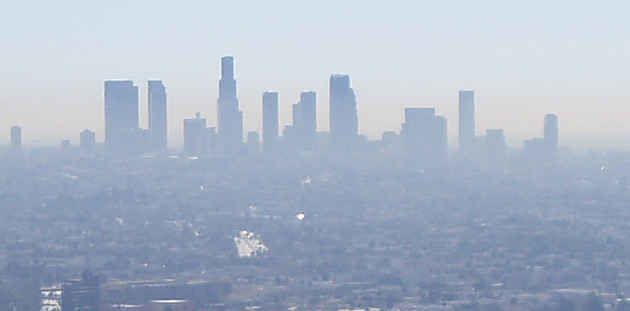Given the length of time the U.S. Government is taking to set new gas mileage standards for 2025, you’d be forgiven for thinking the only benefit from driving a high gas-mileage car is the savings you make at the pump.
You’d be wrong.
Driving high gas mileage cars equates to lower tailpipe emissions, less air pollution, and a healthier population
And now there’s data to prove it.
According to the latest study from the National Oceanographic and Atmospheric Administration (NOAA) -- (via TreeHugger) -- air pollution from car exhausts is down by 98 percent compared to the 1960s.
Los Angeles Smog
Although gasoline use in LA is almost triple that of what it was in the 1960s, the amount of volatile organic compounds (VOCs) in the air has dropped from around 100 parts per billion to just 2 parts per billion.
Between 2002 and 2010 alone, the amount of VOCs in the air of LA halved.
Of course, VOCs aren’t the only pollution to come from an exhaust.
As the study points out, however, VOCs are a major cause of ground-level ozone, which not only causes smog, but can cause respiratory diseases.
Since its enactment in 1963, the Environmental Protection Agency’s Clean Air Act, and its various amendments, has tackled air quality, legislating on emissions from everything from factories to airplanes and the automotive industry.
From 1975, for example, it mandated every new car sold in the U.S. have a catalytic converter, designed to improve car emissions.
As data from the NOAA attests, the period between the mid 1970s and early 1980s saw a steady, marked drop in VOCs measured in the air of Los Angeles.
Of course, California doesn’t just have the EPA to thank for an improvement in air quality.
LA air pollution study
The Californian Air Resources Board, set up in the late 1960s, has played a large part in improving Los Angeles’ air quality, through the implementation of even tougher air quality standards.
Among them, stricter emissions targets for automakers, and mandates that mean automaker who want to sell cars in the state have to produce a specific percentage of low and zero-emission cars.
The results are clear to see.
“Requirements for catalytic converters, use of reformed fuels less prone to evaporate, and improved engine efficiency of new vehicles have all likely contributed to overall declines in vehicle-related pollution, including VOCs,” the NOAA says in its study.
There’s more good news too.
Even though the number of cars in Los Angeles continues to climb, perpetuating the city’s image as one of the most congested places in the U.S., gasoline use in LA has started to fall, after hitting a peak around 2008.
That’s a clear indicator that people are driving less, and buying the cleanest, most efficient cars ever.
So next time you look at a new car remember this: the higher your car’s gas mileage, and the lower its tailpipe emissions, the more easily you -- and your family -- will be able to breathe.
+++++++++++













